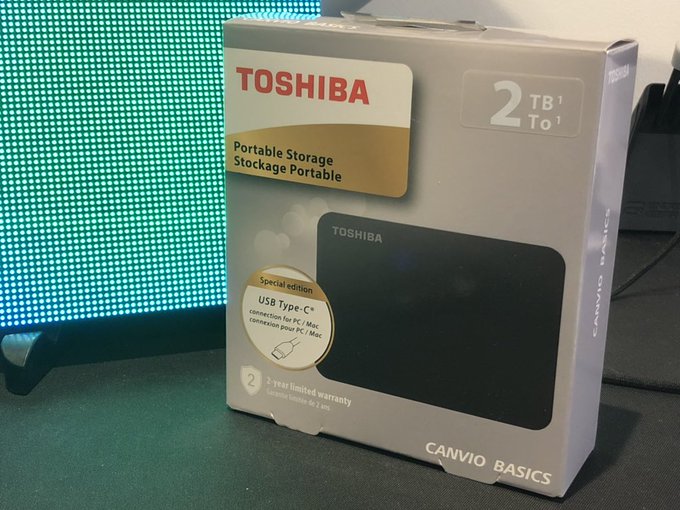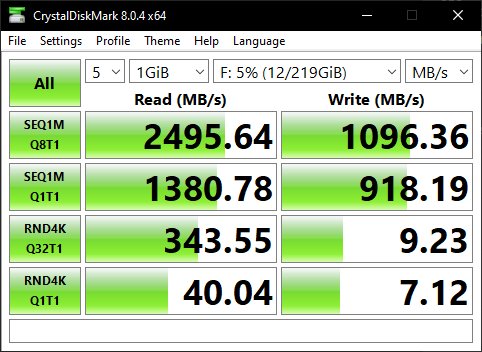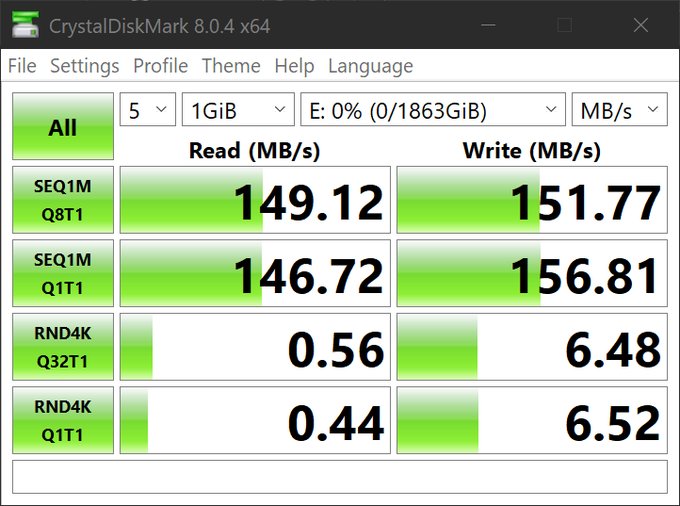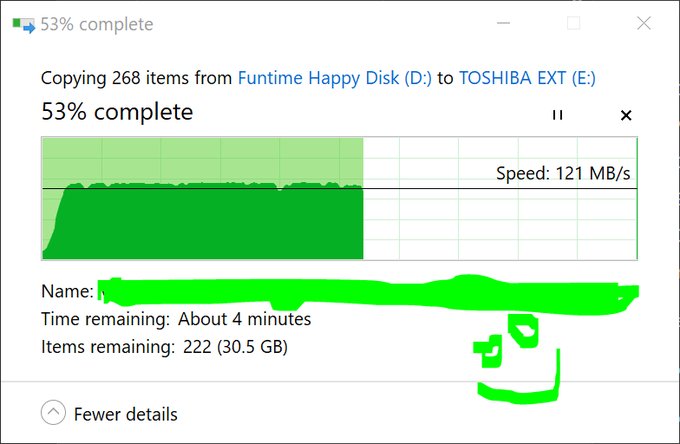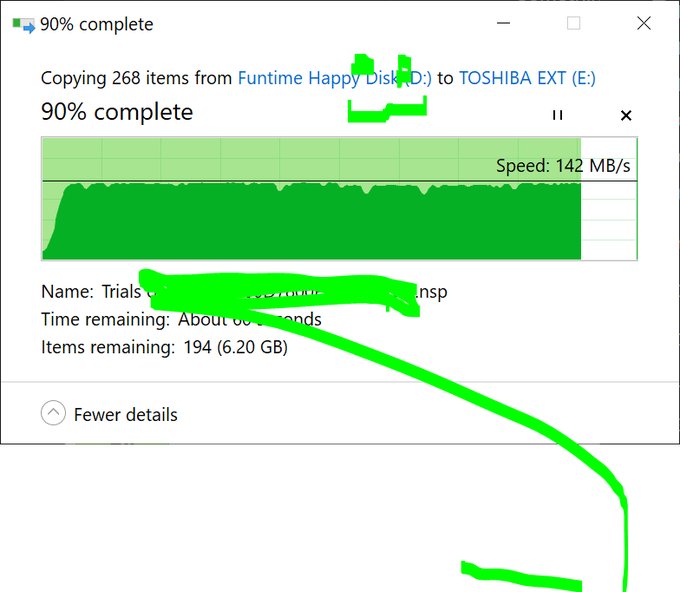Toshiba Canvio Basics – Special Edition – 2TB Reviewed
Caught up in the allure of gloriously fast NVM.e SSDs, I sometimes forget that the maligned “spinning rust” drives of yore and old are still a great solution for data archival and backups.
Think I’ve found some cold storage for my Steam Deck! pic.twitter.com/zvie8WNuNI
— Phil Howard (@Gadgetoid) August 25, 2021
At a third the price of a 2.5” SSD, and a quarter to a fifth the price of a 2TB, 2280, NVM.e SSD the Canvio Basics is an affordable way to offload data that might see you creeping up to needing a larger, more expensive SSD in your computer.
But is it any good?
In short; yes!
The “Special Edition” Canvio Basics that winged its way to me, shipped with a USB Type-C to micro USB “B” cable. The drive itself is nestled in an unassuming black plastic enclosure.
As the name suggests it’s a truly no-frills approach to archival storage. Toshiba don’t mention much about the 2.5” HDD contained within, but HWInfo revealed it to be a MQ04UBD200. The MQ series tops out at 2TB and spins at 5200RPM- a fairly respectable choice.
The plastic enclosure has very little flex or give, and I suspect it’s just fine for a 2.5” drive that has its own metal chassis. It’s rock solid from the edges, which is where it counts.
But is it fast?
In short; it depends.
While a 5200RPM hard drive isn’t going to saturate USB 3.1 in a month of Sundays, it does have a uniquely satisfying property- consistency.
I tested Kioxia’s U365 flash drive recently- small, lots of capacity, but fatally flawed when it comes to writing any significant chunk of data. Flash likes to pretend to be fast, and then very quickly tank in performance when it realises it has to write the data to permanent storage.
The Canvio Basics doesn’t make any promises it can’t keep. Throughput is roughly 150MB sequential read/write and it stays that way for the duration of a write operation.
Today’s apples to oranges comparison:
OWC Envoy Pro EX 480GB vs Toshiba Canvio Basics 2TB pic.twitter.com/qMS57EKl6g— Phil Howard (@Gadgetoid) August 25, 2021
This means you can back-up gigabytes upon gigabytes of files – I chose a mixed bag of large/small files weighing in at just over 64GB – without watching the write speed slowly taper off into the excruciating single digits. Indeed for the whole 64GB batch the write kept up a respectable 142MB/sec with a few small dips where many smaller files were copied over.
totally normal nothing to see here, still keeping pretty on top of that 140MB/s speed with a few dips here and there for a smattering of smaller files. pic.twitter.com/e01wCmUTl4
— Phil Howard (@Gadgetoid) August 25, 2021
Note: these images are redcated because I was making a bad joke about copying my “Yuzu” directory, which the enlightened will recognise as a Nintendo Switch emulator, and… y’know… being afraid the Nintendo dragon might be watching. It’s not… y’know… 64GB of anything salacious.
The U365, by contrast, very quickly tanked to ~40MB/s taking roughly 4x as long to copy even large files.
Random, not-quite-sequential reads/writes – the ebb and flow of copying multiple small files, for example – don’t fare so well on ye olde HDD however. The Canvio Basics clocked in at around 1/2MB/s read, and around 6.5MB/s write when brutalised with the slightly unfair random 4K test in Crystal Disk Mark. There’s no getting around the physics here- the disk physically has to rotate if you’re writing/accessing files in multiple locations.
But this worst-case read/write speed doesn’t seem to come into play during normal archival use – indeed writing 64GB of garbage never dipped below 130MB/s and took roughly 8 minutes. I can live with that.
on the home stretch now! pic.twitter.com/z4H78gHfFO
— Phil Howard (@Gadgetoid) August 25, 2021
While the Canvio was utterly demolished by the Thunderbolt 3 OWC Envoy drive I tested recently, you could buy roughly 16TB of Toshiba external hard drives for the cost of just a single 2TB Thunderbolt SSD so… uh… yeah speed *really* has to matter to you.
What about storing games? My loading time tests with the Kioxia UHS-I Exceria SD card are somewhat relevant here. I observed 60% longer loading times versus an internal NVM.e SSD which sounds dire, but since we’re talking the difference between 21s and 35s here it really isn’t that bad. On the slightly faster Canvio Basics you can expect game loading times to be – on average – not all that much slower than an internal SSD and I’d confidently venture that you could use this 2TB monster as a cost-effective way to store a Steam library, or at least to rotate out the games you don’t play as frequently with Steam Mover.
Overall the Canvio Basics is exactly what it says- a basic, time-honoured, good ol’ reliable hard disk drive that’ll soak up photos, videos, backups and games without breaking the bank. It’s a capacious little trooper that proves hard disk drives still very much have a place.
In a world slowly edging toward USB Type-C ports, the Special Edition’s USB Type-C to micro USB “B” cable is appreciated. It works just as well with a regular USB A cable, however. It’s also handy that the cable isn’t one of those pesky split blighters that take up two USB ports, though I suspect they’re a thing of the distant past and I can’t fathom why I have so many in my cable box.
My Canvio Basics is currently formatted for use with Linux, and serving as a place to offload some chonky ISO files, SD card backups, system backups and obnoxiously proportioned git repositories from my actually very small (256GB) workstation SSD which was creeping up to capacity. It’s perfect for this, and I’d certainly grab another one in a heartbeat if I had more stuff to archive. I’d also strongly recommend this as a quick fix for anyone who plumbed for the default storage option on – for example – an M1 MacBook and are suddenly realising that photos, videos and iPhone backups are actually kinda big.
